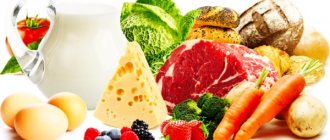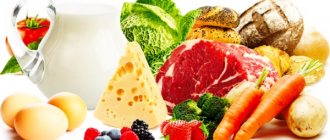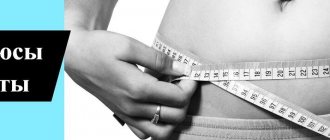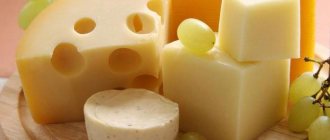Hard boiled eggs go great in salads and can be eaten on their own with salt and pepper.
Here's everything you need to know about hard-boiled eggs.
Hard boiled egg - calories, nutritional value and health benefits
Nutritional value, composition and calorie content
A hard-boiled egg is rich in nutrients, protein and healthy fats. One large hard-boiled egg (50 grams) contains (as a % of the recommended daily intake) (1):
- Calorie content : 77.5 kcal (4%).
- Carbohydrates : 0.6 g (0%).
- Fat : 5.3 g (8%).
- Protein : 6.3 g (13%).
- Vitamin A : 293 IU (6%).
- Riboflavin : 0.3 mg (15%).
- Folate : 22 mg (5%).
- Vitamin B12 : 0.6 mcg (9%).
- Pantothenic acid : 0.7 mg (7%).
- Phosphorus : 86 mg (9%).
- Selenium : 15.4 mg (22%).
- Cholesterol : 212 mg (71%).
- Omega-3 fatty acids : 39 mg.
- Omega-6 fatty acids : 594 mg.
One large hard-boiled egg also contains trace amounts of vitamins and minerals such as vitamin E, vitamin K, thiamine, vitamin B6, betaine, calcium, iron, magnesium, potassium, sodium, zinc and manganese.
Despite the huge amount of nutrients contained in hard-boiled eggs, this product is a fairly low-calorie food. One hard-boiled egg contains only 77 calories, 5 grams of fat and very few carbohydrates.
One large hard-boiled egg also contains a decent amount of protein, with over 6 grams.
In addition, eggs contain a complete set of amino acids, which means they are a complete source of protein.
Hard-boiled eggs also contain a variety of important nutrients, including vitamin D, zinc, calcium and all B vitamins. They are a particularly good source of riboflavin (vitamin B2) and vitamin B12.
Many of the nutrients in eggs are found solely in the yolk, while egg whites contain mostly protein (2).
Summary:
One large hard-boiled egg (50g) is low in calories and rich in many important vitamins, minerals and nutrients. While the yolk provides your body with nutrients, fats, and protein, the egg white contains mostly protein.
How to choose eggs
What do the stamps on eggs mean, and which eggs are better: brown shelled or white? Should the yolk be bright orange or pale yellow?
Most often you can find the marking “C” on eggs - table. The following is the category of egg. "B" - eggs over 75 grams, "O" - selected, from 65 to 75 grams, "1" - category 55-65 grams, "2" 45-55 grams, "3" - the smallest, 35-45 grams .
The color of the shell does not mean anything special, it only shows what color the chicken that laid the egg is. And the color of the yolk indicates the feeding habits of the animal.
Excellent source of high quality protein
Protein is vital to your health, including muscle and bone growth, and the production of hormones and enzymes (3).
One large hard-boiled egg provides your body with approximately 6 grams of high-quality protein. In fact, eggs are one of the best sources of protein (1).
This is due to the fact that they contain a full range of essential amino acids (3, 4).
One common misconception is that protein is only found in egg whites.
However, nearly half of egg white content comes from the yolk (5, 6).
Therefore, it is best to eat the egg with the yolk - this will give you the opportunity to get all the nutrients contained in the egg that are important for your body.
Summary:
Eggs are an excellent source of protein. They contain all nine essential amino acids, and the egg white and yolk contain almost equal amounts of high-quality protein.
What is chicken protein? Folk recipes
Chicken egg white is used for medical purposes to stop severe nosebleeds, relieve pain from burns, restore a lost voice, and eliminate a sore throat.
Traditional recipes:
- In case of poisoning with mercury and copper salts. To delay the absorption of toxic substances, it is recommended to eat raw egg whites.
- For cuts. The film under the shell can be used as a plaster.
- For headaches. Migraines that occur due to nervousness are recommended to be treated with a cocktail made from raw eggs and hot milk.
- During a neurological attack. It is useful to apply boiled protein to a place with intense pain. It is believed that as the egg cools, the attack weakens.
- For sprains, dislocations. The injured area is lubricated with balm, the recipe of which is borrowed from Tibetan medicine. To prepare it, 10 ml of alcohol is mixed with the white of one egg and flour until a mushy mixture is obtained. The balm is left for at least 2 hours. The compress is bandaged tightly.
- For burns. The burned area is smeared with a white-yolk mixture of a raw egg.
- For sore throat. Raw protein from two chicken eggs is mixed with 30 g of butter, 10 g of flour and 10 ml of natural honey. The resulting mixture is taken 15 g 2-3 times a day.
- For uterine bleeding. Lemon juice (10 ml) is mixed with fresh proteins (6 pcs.), The resulting cocktail is drunk on an empty stomach, provided there are no digestive problems.
Cholesterol level
For many years, eggs have had a bad reputation due to their high levels of cholesterol.
It's true that eggs contain a lot of cholesterol. One large hard-boiled egg contains 212 mg of cholesterol, which is 71% of the RDA (1).
However, recent studies show that dietary cholesterol has very little effect on blood cholesterol levels (7, 8).
For most people, dietary cholesterol is not associated with cardiovascular disease risk and does not increase total cholesterol or “bad” LDL cholesterol (9, 10).
In fact, consuming eggs may improve your levels of “good” HDL cholesterol (7, 11, 12).
Additionally, two studies that examined data from more than 100,000 healthy adults found that eating one whole egg per day was not associated with an increased risk of cardiovascular disease (12).
However, people with diabetes should exercise caution when consuming eggs, as some studies suggest that eating 7 eggs per week may increase the risk of developing cardiovascular disease (13).
Ultimately, more research is needed on the relationship between egg consumption and the risk of cardiovascular disease in people with diabetes.
Summary:
Although hard-boiled eggs are high in cholesterol, research shows that dietary cholesterol does not negatively affect blood cholesterol levels in most people. Eggs have been found to improve cholesterol profiles by increasing levels of "good" HDL cholesterol.
It's a chicken egg. Categories of chicken eggs - how they differ
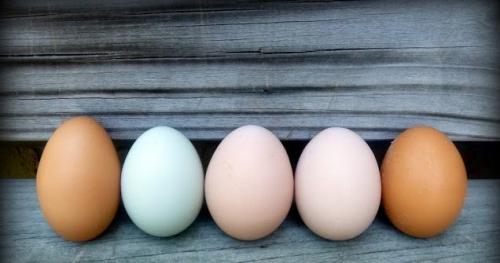
We welcome you, dearly beloved guests and regular readers of our site! Today we will analyze the categories of chicken eggs, what is their difference and what benefit or harm they contain. Chicken eggs are included in the diet from the first months of a person’s life in the form of complementary foods to provide a sufficient amount of vitamin D to the baby.
In subsequent years, the chicken delicacy is consumed raw, boiled, fried, and added to salads, creams and other dishes. This popularity of the product is due to its beneficial properties.
Eggs are readily used in cosmetology, adding a component to hair masks, shampoos, and other care products, which confirms the value and benefits of this product.
What are the types and categories of eggs?
Today the market offers 2 types of chicken eggs that meet the state standard. The division is based on the period and method of storage (age of the product). Both each copy and one package are stamped.
Attention! Both types of eggs are suitable for consumption, taking into account the indicated shelf life. This classification does not show the worst and the best.
Types of eggs
- Diet egg - “Young”, i.e. very fresh. Can be eaten raw. It is considered dietary until the seventh day from the moment of laying. Not stored at sub-zero temperatures. Difficult to clean after cooking. Marked with the letter "D".
- Table egg. Shelf life increased to 25 days at room temperature, up to 90 days in the refrigerator. It is not advisable to eat it raw; it should be cooked. Marked with the letter "C".
Information: how to check the freshness of eggs is described in detail in another article, so we will not dwell on this issue.
Egg categories
- The highest category – unit weight from 75.0 grams, large. Giants among their own kind. Designation - "B".
- The first category - weigh from 55.0 grams to 64-65.0 grams, medium size. Designated as “C1”.
- Second category. Weight ranges from 45.0 -54.8 g, marked “C2”.
- Third category. Small testicles from 35.0 to 45.0 g, stamped “C3”.
- Selected ones weigh 65 – 75g. Slightly smaller than a premium product. Designation – “O”.
Interesting: in recipes, the egg ingredient is meant to weigh 40.0 grams, which corresponds to the 3rd category.
Today, the range of chicken products surprises consumers with their diversity. They sell eggs enriched with selenium and iodine, with two yolks, and different shell colors.
The categories of chicken eggs “bio” and “eco” are assigned if the black whale grew and laid free-range and was fed with natural products. This characteristic is dubious, without a guarantee in relation to the CIS countries, unlike its European neighbors.
What are the benefits of chicken eggs?
- Stimulates brain activity and the process of memorization.
- They help the liver function, cleanse it of waste and toxins.
- Prevents the appearance of cataracts.
- Participate in the normalization of the blood coagulation mechanism.
- Positively influence sex hormones. Male sperm become more active and of better quality.
- Calcium helps strengthen teeth, bones, and joints.
- Has a beneficial effect on the nervous system.
- Reduces the risk of breast cancer in women.
- Helps to lose weight due to the content of proteins that satisfy hunger.
- Recommended for pregnant women. Nutrients will protect the baby from developing certain developmental defects.
Why are chicken eggs harmful?
People suffering from diabetes should not eat this product - it will double the risk of stroke and heart attack.
Those who like to “drink” the delicacy run the risk of becoming infected with salmonella. You can avoid this by washing the product with soap under running water, or better yet, boiling it.
Excessive consumption of yolk increases cholesterol. It is not advisable to eat more than two units a day.
Middle-aged men should not eat more than seven testicles per week, as they contribute to the formation of plaques in the blood vessels: the risk of premature death.
What color eggs are healthier?
So what color shell indicates usefulness? Why are some light, white, others brown? There is no mystery, as well as the dependence of the color of the shell on the quality of the egg. The shade of the outer shell is related only to the breed of laying hen. Choosing light dark specimens is a matter of visual preference.
Preferences for the type, category, and color of a dietary delicacy are individual. They have one thing in common: their usefulness, confirmed by doctors and nutritionists.
Make decisions easily! Good luck!
Improves brain and eye health
Eggs provide your body with important essential nutrients and antioxidants that support brain and eye health.
Kholin
Choline is an essential nutrient for many critical processes in your body.
Your body does produce some choline, but not in large quantities. Therefore, you should get choline from your diet to avoid deficiency (14).
However, most people today do not consume enough of it (15, 16).
Choline is critical to maintaining a healthy nervous system as it helps produce acetylcholine, a neurotransmitter involved in memory and learning (17).
Choline is important throughout your life. It promotes fetal brain development and memory, as well as cognitive function in older adults (15, 18).
It is also vital for pregnant women, as adequate choline levels may reduce the risk of neural tube defects in the fetus (19).
Choline is found in the yolk - one large hard-boiled egg contains 147 mg of choline, which is 27% of the daily value. In fact, eggs are the most concentrated source of choline (14, 15).
Lutein and Zeaxanthin
Lutein and zeaxanthin are two antioxidants best known for their role in eye health.
They fight the harmful effects of free radicals that can accumulate in your eyes (20, 21).
Lutein and zeaxanthin have been shown to slow the development of cataracts and protect against age-related macular degeneration (macular degeneration) (22, 23).
They may even protect your eyes from harmful blue light (24, 25).
Egg yolks are an excellent source of these two carotenoids.
Plus, thanks to the fat contained in the yolk, your body seems to absorb lutein and zeaxanthin very well (26, 27).
Summary:
Egg yolks are an excellent source of choline, which is essential for brain health and development. They are also rich in lutein and zeaxanthin, antioxidants that promote eye health.
Hard-boiled or fried egg: Which is better?
Hard-boiled eggs are made by placing unshelled eggs in a pan filled with cold water, then boiling them until the yolk is set. They are prepared without adding oil.
On the other hand, the process of cooking fried eggs requires the addition of vegetable oil, which adds additional calories and fat.
For example, one large hard-boiled egg contains 77 calories and 5.3 grams of fat, compared to 90 calories and 7 grams of fat in one large fried egg (1, 28).
Besides their fat and calorie content, boiled and fried eggs have very similar vitamin and mineral profiles. They do not differ in the amount of protein and nutrients.
Summary:
While hard-boiled eggs are cooked without additional ingredients, fried eggs require the addition of oil, which makes them higher in calories. However, fried and boiled eggs are very similar in composition.
Summarize
- A hard-boiled egg is a low-calorie, nutrient-rich food.
- Eggs are an excellent source of high-quality protein and are rich in B vitamins, zinc, calcium and other important nutrients and antioxidants such as choline, lutein and zeaxanthin.
- Despite their high cholesterol levels, eggs do not appear to increase the risk of heart disease in most people.
- Boiled eggs are cooked without adding oil, so they contain fewer calories and fat than scrambled eggs.
- They can be one of the easiest and healthiest foods to add to your diet.
Eggs
Perfect breakfast
Let's return to chicken eggs, without which it is impossible to imagine the diet of the average resident of Russia: even if a person does not eat eggs, they still “get” into his menu - we eat a lot of dishes and products that include eggs. When buying products in supermarkets, we do not always read their ingredients, and the label does not always indicate that they contain eggs. These products include baked goods and baking mixes, confectionery products, some pasta, sausages and other meat products, mayonnaise, ice cream, crab sticks, etc.
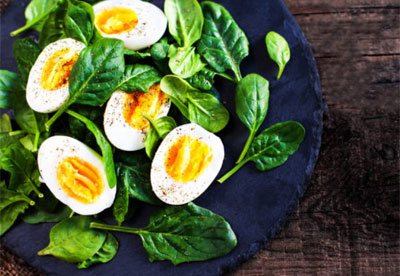
The ancient Romans loved to eat boiled eggs for breakfast, and many modern scientists are always trying to prove that it is with boiled eggs that you should start your daily menu: this allows you to increase your performance and feel in great shape all day long.


